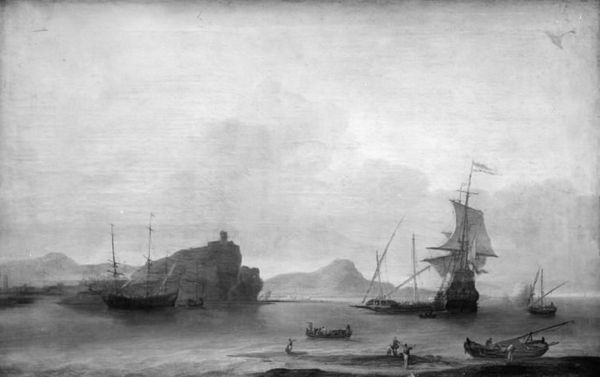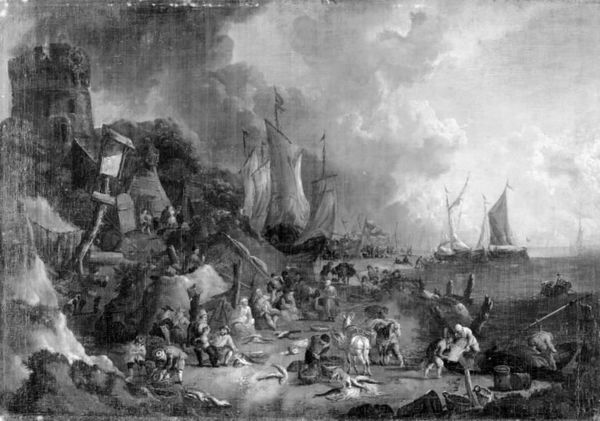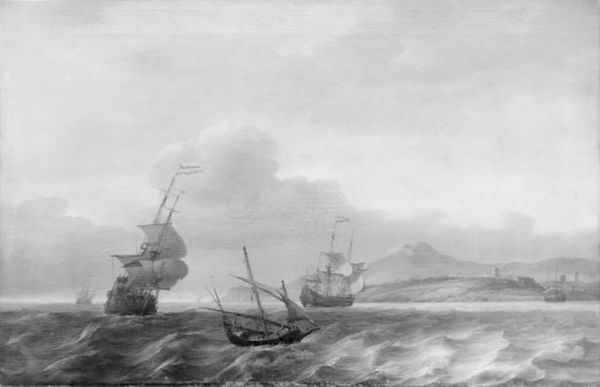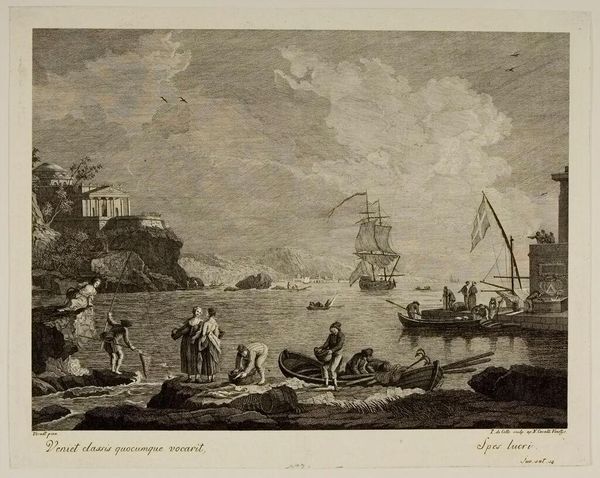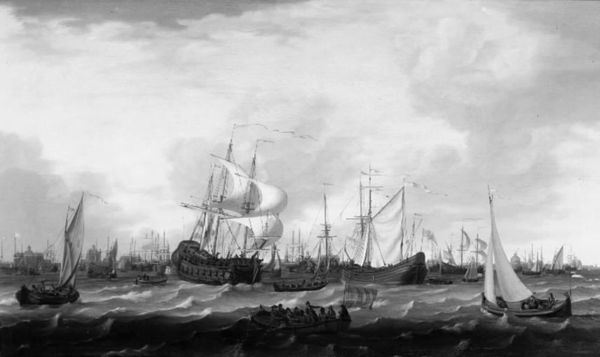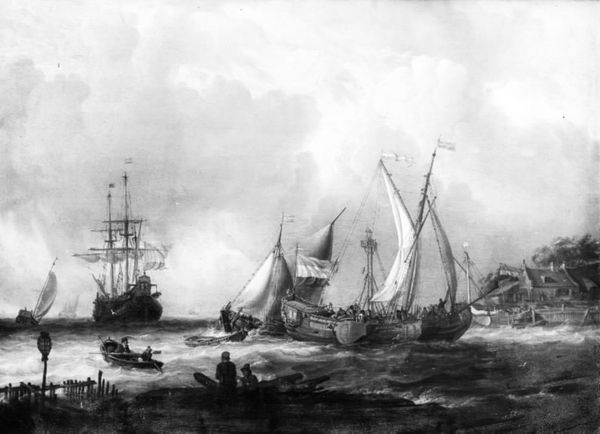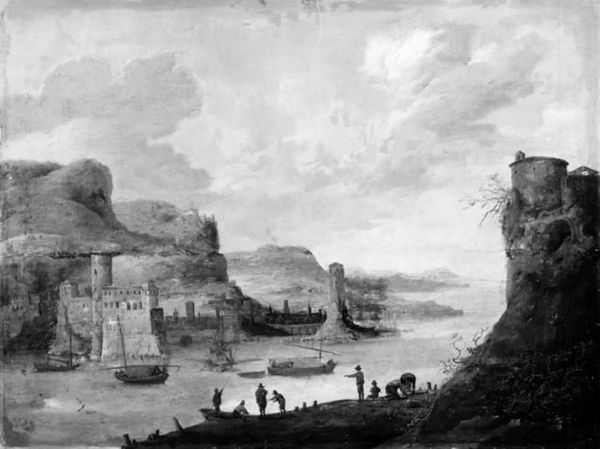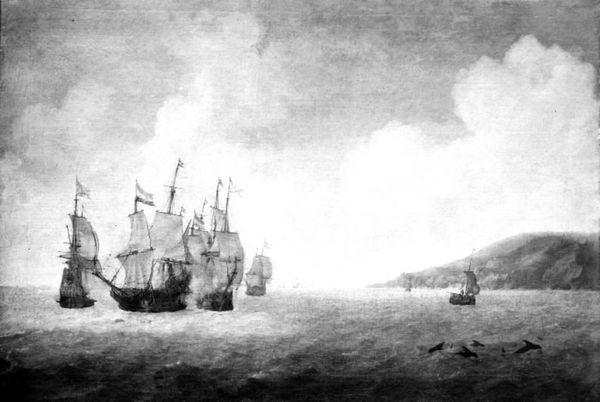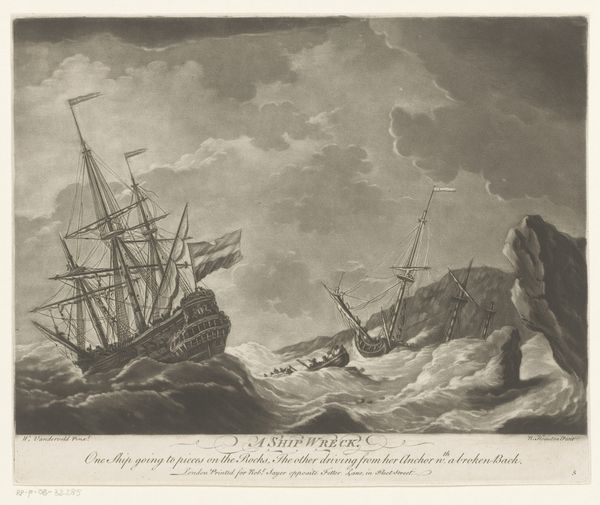
painting, oil-paint, wood
#
baroque
#
dutch-golden-age
#
painting
#
oil-paint
#
landscape
#
wood
#
cityscape
#
genre-painting
#
charcoal
Dimensions: 59 cm (height) x 85 cm (width) (Netto)
Editor: So, here we have Abraham Jansz Begeyn's "Hunting Party by a Southern Harbour," painted sometime between 1652 and 1697, using oil on wood. It’s currently at the Statens Museum for Kunst. The scene feels rather staged to me, like a wealthy display, but also quite static. How do you interpret this work? Curator: It’s easy to see it that way, and the artifice speaks volumes. I immediately think about how Dutch Golden Age paintings often masked a darker undercurrent to their "picturesque" scenes. Who precisely benefits from this "hunting party" leisure? Consider the power dynamics inherent in colonization and trade during this period. The harbour isn’t just a backdrop; it’s a locus of economic and, by extension, political power. Does seeing the harbor this way change your sense of the painting’s mood? Editor: Definitely. The ships now feel less romantic and more…exploitative, maybe? The "hunting party" now seem like colonizers perhaps readying themselves for transport and resources they’re looking to take. What does that reveal? Curator: Precisely! Think about the landscapes, particularly the coastal ones. They often present an idealised vision that belies the environmental impact of shipbuilding, trade routes, and resource extraction that fuel this ‘Golden Age’. This is also an exclusionary aesthetic. Editor: So, Begeyn is subtly showcasing the complex relationship between the elite and the landscape that supports their wealth. The idyllic scenery makes the whole political-economic situation feel much more insidious. Curator: Exactly. Begeyn uses this landscape as an argument – about what is permissible, who has the right of dominion, who gets access, and who does not. So how would you now articulate its relevance in a contemporary context? Editor: Well, understanding this context helps us critically examine how landscapes are still used today to justify exploitation and obscure social injustices. Curator: And that deeper look at landscape, exploitation, and denial makes these scenes not so very "golden" after all. Thanks to new insights, I learned from your reaction as well.
Comments
No comments
Be the first to comment and join the conversation on the ultimate creative platform.
